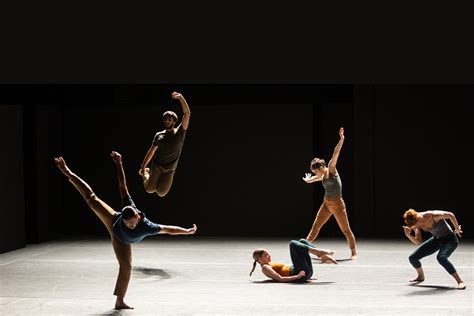The 1920s storybook house style is a captivating architectural phenomenon that has been enchanting homeowners and designers alike for generations. Characterized by its whimsical and romantic appeal, this style often features a blend of medieval and fairy-tale elements, such as steeply pitched roofs, half-timbering, and intricate stone or brick detailing. To recreate the enchanting interiors of a 1920s storybook house, it’s essential to delve into the era’s design principles, materials, and decorating tips.
Historically, the 1920s was a time of great change and liberation, with the onset of the Jazz Age and the Harlem Renaissance. These cultural movements influenced the design aesthetic of the time, with a focus on opulence, luxury, and exoticism. The storybook house style, in particular, was influenced by the English Cotswold style, with its emphasis on natural materials, such as stone, brick, and timber.
One of the fundamental aspects of 1920s storybook house interiors is the use of warm, rich colors. Earthy tones such as sienna, umber, and golden brown were favored for their ability to evoke a sense of coziness and comfort. These hues can be incorporated into your interior design through the use of stained wood, brick, or stone accents, as well as through the application of warm, muted paints and stains.
The selection of furnishings and decor for a 1920s storybook house interior requires careful consideration. Pieces from the Arts and Crafts movement, such as those designed by Gustav Stickley or Greene and Greene, are ideal for their emphasis on handcrafted quality and natural materials. Additionally, antique or vintage pieces in good condition can add a touch of authenticity to your space.
When it comes to textiles, the 1920s were renowned for their lavish use of plush fabrics, such as velvet and linen. These materials can be used for upholstery, drapery, and even wall coverings to add depth and visual interest to your space. Furthermore, intricate patterns and motifs, such as florals and geometrics, were popular during this era and can be incorporated through rugs, throw pillows, and other decorative accents.
Lighting is another crucial aspect of 1920s storybook house interiors. The use of lantern-style fixtures, sconces, and chandeliers in bronze, copper, or wrought iron can help to create a sense of warmth and ambiance. Additionally, the incorporation of natural light, through the use of large windows, skylights, or solar tubes, can help to illuminate your space and reduce the need for artificial lighting.
To further enhance the storybook ambiance of your interior, consider incorporating architectural details such as wooden beams, built-in cabinetry, and decorative trusses. These elements can help to create a sense of depth and history, while also providing functional storage and display space.
In terms of specific decorating tips, consider the following:
- Use a mix of patterns and textures: The 1920s were known for their bold, eclectic approach to pattern and texture. Consider combining stripes, florals, and geometrics in a single space to create a visually interesting and dynamic atmosphere.
- Incorporate natural elements: The storybook style often incorporates natural elements, such as plants, branches, and stones, into its design. Consider adding a vase of fresh flowers or a potted plant to your space to bring in a touch of the outdoors.
- Add vintage touches: Vintage or antique pieces can add a touch of authenticity to your space. Consider scouring thrift stores, estate sales, or online marketplaces for unique, one-of-a-kind items that reflect the era’s style.
- Don’t forget the details: The devil is in the details when it comes to recreating a 1920s storybook house interior. Consider adding small, decorative touches such as vintage hardware, metal straps, or decorative nails to your furnishings and decor.
In conclusion, creating a 1920s storybook house interior requires a deep understanding of the era’s design principles, materials, and decorating tips. By incorporating warm, rich colors, plush textiles, and intricate patterns, you can create a space that feels cozy, inviting, and authentic to the era. Don’t be afraid to add vintage touches, natural elements, and decorative details to further enhance the storybook ambiance of your interior.
For those looking to delve deeper into the world of 1920s storybook house interiors, consider exploring the following resources:
- Books: “The Storybook House” by Malcolm Haslam, “The Arts and Crafts Movement” by Bruce Smith
- Websites: The Spruce, Houzz, Pinterest
- Museums: The Metropolitan Museum of Art, The Museum of Modern Art
By following these tips and resources, you can create a 1920s storybook house interior that feels authentic, inviting, and truly unique.
What are some common characteristics of 1920s storybook house interiors?
+Common characteristics of 1920s storybook house interiors include the use of warm, rich colors, plush textiles, and intricate patterns. Additionally, these spaces often feature architectural details such as wooden beams, built-in cabinetry, and decorative trusses.
How can I incorporate vintage touches into my 1920s storybook house interior?
+Consider scouring thrift stores, estate sales, or online marketplaces for unique, one-of-a-kind items that reflect the era's style. Additionally, look for vintage hardware, metal straps, or decorative nails to add a touch of authenticity to your furnishings and decor.
What are some tips for balancing authenticity and functionality in a 1920s storybook house interior?
+Consider incorporating modern amenities, such as recessed lighting or built-in storage, in a way that feels organic and authentic to the space. Additionally, edit your decor carefully, and focus on a few statement pieces rather than a multitude of smaller items.
By embracing the unique charm and character of the 1920s storybook house style, you can create a space that feels truly one-of-a-kind. Whether you’re a seasoned designer or a DIY enthusiast, the world of 1920s storybook house interiors offers a wealth of inspiration and creativity waiting to be explored.



